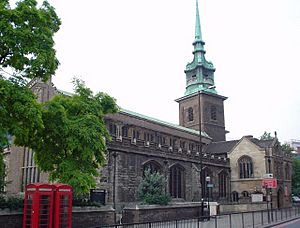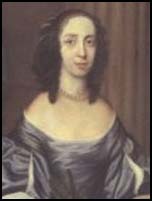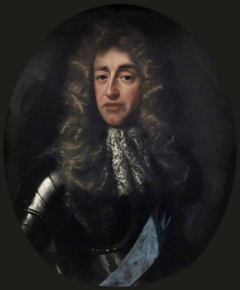Allen Apsley (Royalist) facts for kids
Quick facts for kids
Sir Allen Apsley
|
|
|---|---|

All Hallows-by-the-Tower, where Apsley was baptised in September 1616
|
|
| Member of Parliament for Thetford |
|
| In office May 1661 – January 1679 |
|
| Master of the Hawks | |
| In office 1660–1675 |
|
| Royalist Governor of Barnstaple | |
| In office May 1645 – April 1646 |
|
| Royalist Lieutenant-Governor of Exeter | |
| In office December 1642 – April 1645 |
|
| Personal details | |
| Born | 28 August 1616 East Smithfield |
| Died | 15 October 1683 (aged 67) St James's Square |
| Resting place | Westminster Abbey |
| Nationality | English |
| Political party | Royalist |
| Spouse | Frances Petre (1645-his death) |
| Children | Frances (1653–1727), Isabella (after 1697), Peter (after 1691) |
| Alma mater | Trinity College, Oxford |
| Occupation | Soldier and politician |
| Military service | |
| Allegiance | |
| Rank | Colonel |
| Battles/wars | Wars of the Three Kingdoms 1643 Siege of Exeter; Langport; Siege of Barnstaple Second Anglo-Dutch War Battle of Lowestoft |
Sir Allen Apsley (born August 28, 1616 – died October 15, 1683) was an important English soldier and politician. He supported the King during the English Civil War, a big conflict in England. He also took part in the Second Anglo-Dutch War, which was a naval war.
Apsley was a MP for Thetford from 1661 to 1679. People said he was good at keeping friends with many different groups. This helped him solve political problems.
He was born in London. His family came from West Sussex. This area mostly supported Parliament when the Civil War began in 1642. So, Apsley spent most of the war in Devon. He was a deputy governor in Exeter from 1643 to 1645. Then he became governor of Barnstaple until the war ended in 1646. During this time, he met important people like Queen Henrietta Maria of France and Charles II. These connections helped him later in life.
His younger sister, Lucy Hutchinson, was married to John Hutchinson. John was a Parliamentarian. He used his influence to help Allen get his family lands back. In return, Allen stayed out of plots against the government. After the King returned to power in 1660, Allen helped save John from severe punishment.
Allen Apsley became the treasurer for James, Duke of York. He managed James's political work in the Parliament. He lost this job in 1679. Sir Allen Apsley died in October 1683 and was buried in Westminster Abbey.
Who Was Allen Apsley?
Allen Apsley was born on August 28, 1616. His birthplace was East Smithfield, near the Tower of London. He was the oldest son of another Sir Allen Apsley (1567–1630) and his third wife, Lucy St John (1600–1659). His father was in charge of supplies for the navy. His mother's family, the St Johns, owned large lands in Lydiard Tregoze and Ireland. They were also connected to the powerful Villiers family.

George Villiers, 1st Duke of Buckingham, was a close friend of King James VI and I and his son Charles I. With his help, Allen's father became the Lieutenant of the Tower of London in 1617. When his father died in May 1630, he left many debts. Allen's mother remarried, but that marriage ended quickly. This led to many arguments over family property. Until Allen turned 21 in 1637, the King himself often had to settle these disputes.
Allen had a famous younger sister named Lucy Hutchinson (1620–1681). She married John Hutchinson, who became a Parliamentarian officer. Lucy wrote a book called 'The life of John Hutchinson'. It is one of the most important firsthand stories about the First English Civil War. Allen also had a younger brother, James (born 1622), and a sister, Barbara (born 1625). Barbara married George Hutchinson. He also had older half-siblings from his father's first marriage.
In 1645, Apsley married Frances Petre (died 1698). She was from Bouhay in Devon. They had three children who grew up: Frances (1653–1727), Isabella (died after 1697), and Peter (died after 1691).
Apsley During the Civil Wars
Allen and his brother James went to Merchant Taylors' School. Then Allen studied law at the Inner Temple before finishing his education at Trinity College, Oxford in 1631. He was in Nottingham when King Charles declared war on Parliament in August 1642. In October, he led a group of cavalry (soldiers on horseback) at the Battle of Edgehill.
Many families, including the Apsleys, were divided by the war. Most of Allen's family were Royalists, meaning they supported the King. This included Sir Peter Apsley, who owned the main family lands in Thakeham, West Sussex. The St Johns and Carews were also strong Royalist families. However, some family members supported Parliament. These included Edward Apsley and Allen's brother-in-law, John Hutchinson.
Apsley became the deputy governor of Exeter in December 1642. The city was attacked but did not fall until September 1643. In February 1643, he was promoted to colonel. He formed a cavalry regiment that helped defend Exeter and Barnstaple. His younger brother James was his second-in-command.
His role in Exeter meant Apsley worked closely with Queen Henrietta Maria of France. She spent much of 1644 there. The Prince of Wales and Clarendon also stayed there after January 1645. Apsley became Governor of Barnstaple in April 1645. However, the King's armies were defeated at Naseby in June and Langport in July.
The Prince of Wales went into exile in March 1646. On March 30, the New Model Army surrounded Barnstaple. The army's commander, Sir Thomas Fairfax, wrote that Allen Apsley wanted to surrender. But his brother James refused to give up the castle. Despite this, they surrendered on April 13. Apsley then went to stay with his sisters and brothers-in-law in Nottingham.
John Hutchinson helped Allen get his family lands back on very good terms. In return, Allen carried messages from the Army to King Charles. The King was being held by the Scots in Newcastle. Charles knighted Allen in October 1646. After King Charles I was executed in January 1649, Allen avoided plots against the new government. This was to protect his brother-in-law, John. However, in 1651, his brother James reportedly tried to harm a government official. Allen remained friends with Clarendon and Charles II. His cousin, Allen Broderick, also gave them useful information.
After the King Returned

After King Charles II returned to power in May 1660, Allen Apsley gained from his friendship with John Berkeley. Berkeley was now in charge of the household for James, Duke of York. Apsley was given the job of Master of the Hawks. This was a good position, worth a lot of money. He also became the treasurer for James. In 1661, he was elected MP for Thetford.
A big family issue was the arrest of John Hutchinson and others who had been involved in the King's execution. This happened in May 1660. Allen's distant relative, John Carew, faced severe punishment. But Allen helped make sure John Hutchinson was released without charge. This was a great achievement, as Parliament was very angry with those who had harmed the King. His sister Lucy wrote that Allen's efforts "turned the scales." John Hutchinson was arrested again in 1663. He was accused of being part of a "Papist plot." This was unlikely, as he was a strong Puritan. Allen could not free him this time, and John died in prison in September 1664.
When the Second Anglo-Dutch War started in 1665, James became the commander of the Royal Navy. Apsley went with him on his main ship, the "Royal James," at the Battle of Lowestoft. The war ended in 1667 with a humiliating attack on the English navy. This led to many cost-cutting measures, which reduced Allen's income. To make up for some of this, he became secretary to the Royal African Company. This company was set up to challenge the Dutch in the slave trade. King Charles and James were major shareholders in this company.
Apsley continued to support James, even when there were arguments about James becoming Catholic. Allen was not re-elected to Parliament in March 1679. This made him the last member of his family to be an MP. A long poem called "Order and Disorder" was published in 1679. For many years, people thought Allen wrote it. But now, it is believed his sister Lucy wrote it. Allen Apsley died at his home in St James's Square on October 15, 1683. He was buried two days later in Westminster Abbey.
Sources
| Court offices | ||
|---|---|---|
| New title | Master of the Hawks 1660–1675 |
Succeeded by Charles Beauclerk |
| Parliament of England (to 1707) | ||
| Preceded by Sir Philip Wodehouse, Bt. and Robert Paston |
Member of Parliament for Thetford 1661–1679 With: William Gawdy 1661–69, Sir Joseph Williamson from 1669 |
Succeeded by Sir Joseph Williamson and William Harbord |

